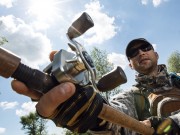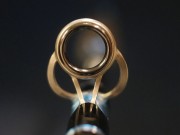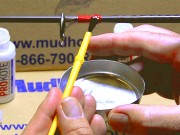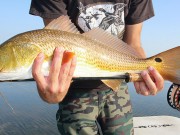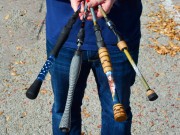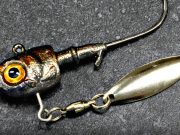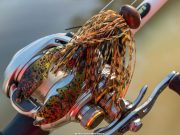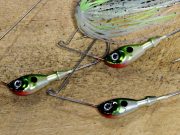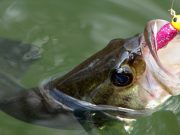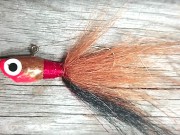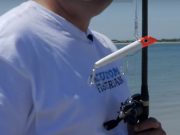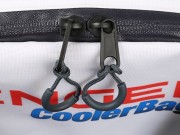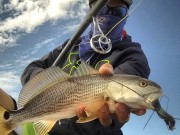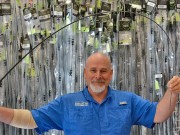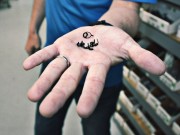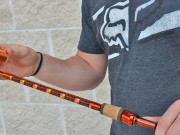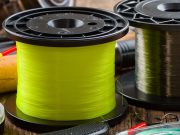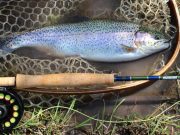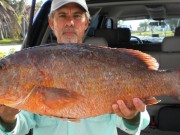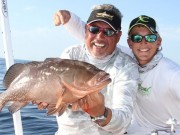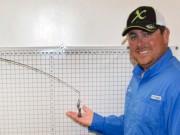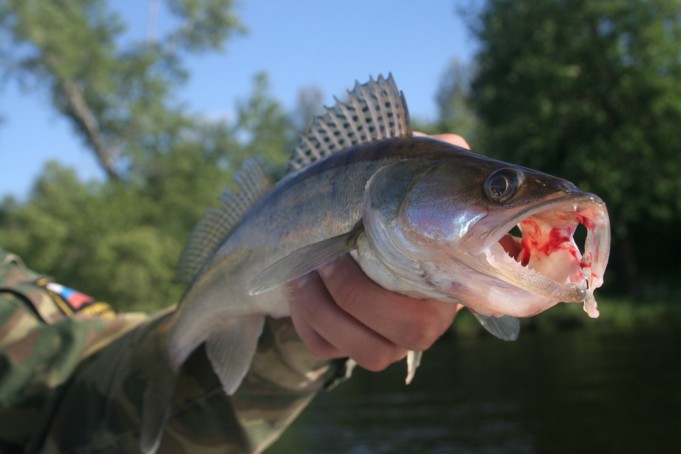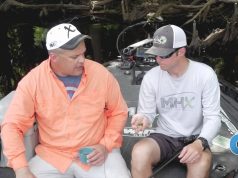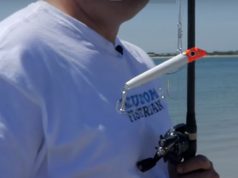Walleyes are awesome fish. They often strike without fear, put up a strong fight, and are probably one of the best eating fish of all freshwater fish.
Fishing strategies for Walleyes vary greatly, since they will strike jigs, spoons, spinners, darts and crankbaits. Before we get into the live bait techniques, let’s go over a few basics about the Walleye.
Walleye Basic Characteristics
Walleyes are largely dark olive and gold in color. The top of a walleye is a dark olive color, then as you look down the side of the body, the colors grade into a tan/golden hue on the scales. This dark olive and tan/gold pattern is broken up by darker areas that extend to the upper sides.
Finally as you look towards the belly, it is more white or beige in color. Most common areas to catch Walleyes (geographically speaking) is up north. Canada and the Northern US, particularly Minnesota and Wisconsin, although other states have them in their fisheries as well.
Watch Your Thumbs
You don’t want to “Thumb” a Walleye like you would, say, a Bass. That is because the mouth of a walleye is armed with many razor sharp teeth. So be sure to handle the fish with care and caution once landed.
Walleye Feeding Habits
Walleyes have excellent vision, particularly in low visibility (lack of sunlight, darker waters, etc…). They tend to feed more extensively at dawn and dusk, on cloudy or overcast days and under choppy conditions.
In stained or murkier waters, walleyes can be caught with regularity throughout the day. In the spring and fall Walleyes are typically located near the shallower areas due to the spawning grounds, and they are most often located in shallower areas during higher winds due to the murkier, higher oxygenated water.
On calmer days the walleyes are more often located at the deep side of shoreline drop-offs. You may hear the term “Walleye chop” which refers to rough water that typically increases the Walleye’s feeding activity.
Often this “chop” will lead to foam on top of the water, and can visually signal good areas to drop a line. Night fishing with live bait can be extremely effective.
The Best Live Bait For Walleyes
Short answer; Leeches, minnows, and more leeches.
I first fished for Walleyes 30 years ago, and over the years I have been lucky enough to fish for them in Canada, Michigan, Wisconsin, and Quebec.
I have fished with friends and professional guides from the respective areas, and the number one go to live bait for Walleyes are Leeches.
Minnows do work well too, and the fishing rigs mentioned below for Leeches will also work by replacing it with a minnow. Use minnows in the one to two inch range for wider bite profiles, but go larger if you are targeting just larger Walleyes.
How to rig leeches for Walleye Fishing
There are tons of techniques, but these are pretty popular.
3-Way Bottom Bouncing While Trolling
Can’t go wrong with a 6′ 6″” to 7′ foot spinning rod, Medium action (fast tip), medium reel, and 8-12 pound test mono/flouro line.
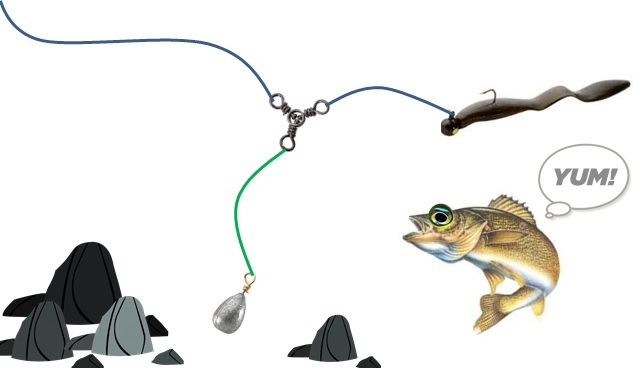
Use a Tri-Swivel. One eye tied to the 8 pound test (reel). The second eye snapped to a 12-24 inch wire leader (you can opt to use heavier mono line, but the Walleye’s teeth can go through it pretty easy). At the end of your leader, use a jig head with a leech. You can also use just a hook and leech.
The weight of the jig head will vary greatly depending on desired strike zone, weather, and currents.
The third eye of the swivel is tied to a 12-18 inch braided line segment with a weight on the end (a bell or egg weight usually work well). Again, the weight needed will vary greatly depending on desired strike zone, weather, and currents.
Although size and weight will vary, we did want to provide some starting points for the tackle we like to use:
Jigs – 1/16-1/4 oz. weight (experiment with color). For this I prefer a naked jig head (no skirt or hair), but opinions vary with conditions.
Weight – Egg or Bell – 1/2-1 oz. If currents are stronger you can obviously go up.
Leech – anywhere from 3 to 6 inch leeches I think work best.
Working the rig
Most commonly, trolling at a slow speed over drop offs, along the deep bite line that separates the drop off, or between 5 and 15 feet of water, where the water has rocks or like structure that are holding the fish (typically near submerged ambush points).
It can also be casted, although I would shorten the weighted segment to 6-12 inches, or just go with Carolina rig.
Rig Action
The idea is to bounce the weight over the bottom, and over rocks and such, and this keeps the live bait just above the bottom where the strike zone is. (The height off the ground is approximately the length of the weighted segment).
If the bite seems to be higher, then you just need to raise the weighted segment accordingly.
If you are fishing with buddies or more than one rod, rig up at different heights and see which length produces the best. Then re-rig the others to that length.
Hope this was helpful, anyone have some ideas how to improve this, or a new technique we should add?



